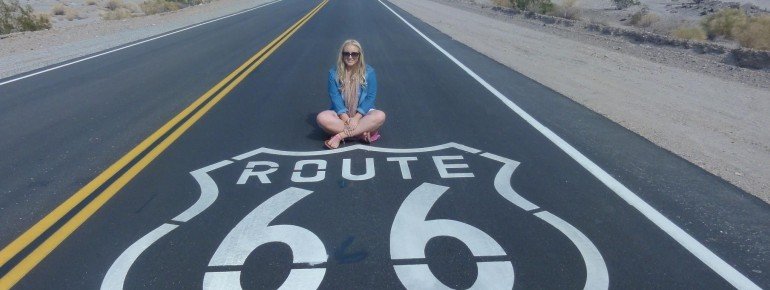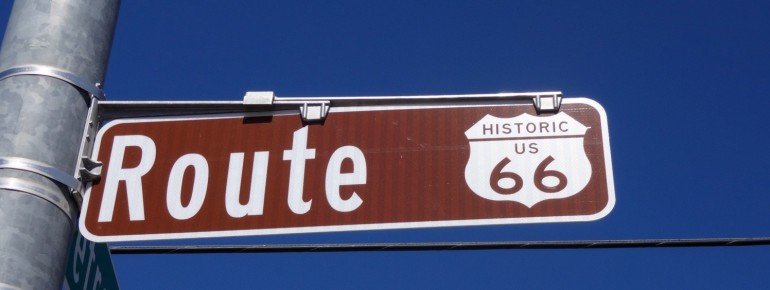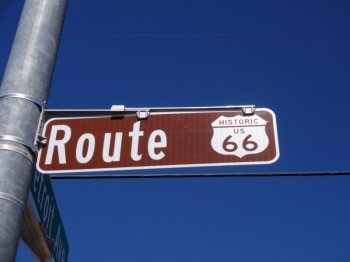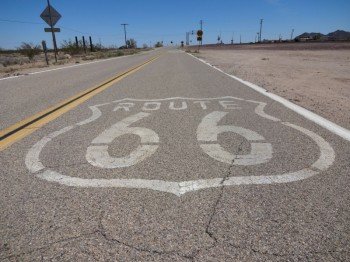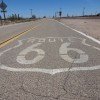Contents
Description
Everybody knows the world famous road, which technically does not even exist anymore and sadly vanished from most of the maps today. Nevertheless is this road still a symbol for freedom, change and adventure, more so than any other in the world. Today, it is still to 85% accessible and traversable with cars and motorbikes, thanks to cities and communities who actively worked to restore the Historic Route 66. Previously, one was able to drive down Route 66 all the way from Chicago to Santa Monica in Los Angeles, covering a distance of about 3939 kilometers (2447 mi). Nowadays many gas stations, motels and diner-cafes live and thrive off the tourism and attractions alongside the Mother Road of America.
The Journey
On the trip down Route 66 you can visit 8 states, namely Illinois, Missouri, Kansas, Oklahoma, Texas, New Mexico, Arizona and California. Since not all of the road is traversable, you will need to evade onto the nearby Interstates. On your drive, you will often encounter stereotype motels and restaurants with big flashing neon signs, largely abandoned areas and deserted streets and gas stations from past times. From time to time, there are signs of the legendary Route 66 symbol depicted on the road. When there aren't many cars around, it is the perfect subject for a picture, with the endless street and stunning scenery in the background.
Interesting Shops wait on the side of the Road
If you decide to drive the entire route, definitely stop at the Clinton Route 66 Museum in Oklahoma. Here, you'll learn everything there is to know about the history of the Main Street of America, you will be able to sit in an exact replica of a 1950's Diner and gaze upon constantly changing special exhibitions. Of course, there is also a museum store, with awesome Route 66 souvenirs and gifts to bring back home.
Famous for its many appearances in film and television is the “Big Texan Restaurant” in Amarillo, Texas, directly on Route 66. If you manage to eat a 2 kilogram (4.4 lb) steak, you will eat for free and you will even get a spot in the restaurant's very own Hall of Fame. In Arizona you should definitely stop in a small town called Seligman. Apart from one of the best preserved segments of Route 66, you can find a great fast food restaurant called “Delgadillo's Snow-Cap Drive- In” and an old but gold barbershop with cult status. This town was inspiration for the animation film “Cars” and the feeling of nostalgia is tangible in the atmosphere.
In California definitely visit the Mojave desert, because with a endless silence and its amazing vastness and breathtaking landscape it is a must-see. Nearby you will find the Ghost town of Calico. During its prime time, the city was home to thousands of inhabitants whilst since the 20th century it is now completely deserted. Today it offers the sight of town exactly like in times of the Wild West, with an old saloon, a school and a prison with adjacent Sheriffs office. The famous road ends at the Santa Monica Pier, where you can admire a sign and get your picture taken with it.
Historical Information
At the time of the roaring 20s in the US, the amount of cars and other vehicles began rising enormously. Cyrus Avery, a highway commissioner, had the idea to build a road for economic purposes between Chicago and California. On July 23rd 1926, Avery opened the famous road. But when the five year long Sandstorm in 1934 hit Colorado, Texas, Kansas and Oklahoma, many farmers lost their entire property and dreamed of a better future in California. Many of them fled using Route 66 and it therefore became a symbol for recommencement and a better life. Even though Route 66 did help the Americans during World War II, its glory days began after 1945. Many soldiers admired the beautiful California and decided to migrate with their families driving down Route 66. The road was yet again a symbol for freedom and adventure.
In the 1950s many people were thriving from economic success and life was never better, therefore tourism grew. This growth was especially noticeable on Route 66, where more and more diners, cafés, stores and gas stations were built to becalm the enormous demand. Drives during the 1960s were characterized by VW Buses whereas the 1970s more and more by camping trailers. The narrow streets of Route 66 were soon not enough for the rising traffic and therefore Interstates with multiple lanes were built. The German “Autobahnen” were used as a model for these Highways, which President Eisenhower was admiring during World War II. When in the 70s the Oil-crisis hit, many Americans had no money to go on vacation and because of that tourism on Route 66 had surpassed its prime time. In the Mid-80s the last of the signs where taken down.
In the 1990s there was a new-found love and enthusiasm for the road and fan clubs, affected communities and cities fought for a greater awareness level of the road. They began reprinting maps with Route 66 back on them, segments were repaired and in some of the towns signs were put back up. Nowadays, it is acknowledged as national culture heritage and many motels and restaurants are able to sustain themselves again from the still ongoing tourism of Route 66.
Interesting facts
- Historic Route 66 is among the 3 best rated Tourist Attractions in the USA.

